 
|
||||
|
|
ASHLEY DAVIES |
|||
|
Assisting Ashley on Gold are a number of musicians, including cameo vocalists Karen Rush and Tess McKenna, a veritable string section with violinists Lizzy Welsh and Erkki Veltheim and cellist Katherine Philp as well as Sam Lemann on second electric lead guitar and mandolin, to name several of the musicians here. Overall, Gold is an impressive showcase for Ashley’s drumming, percussion and synth / keyboards, while it’s also worth noting that his acoustic and electric guitar work is also prominent on many of the Gold tracks. Another key to the sound of Gold is Ashley’s string arranger Bryony Marks.
Too upbeat to fit into contemporary prog-rock and too complex for background soundtrack music, Gold in its place sparks the imagination with a series of beguiling, rock-centric instrumentals that thrives in a variety of sonic settings. With ten tracks clocking in at 36 minutes, Gold is guaranteed to move listeners to the brink of sonic wonderment as they delve into the widescreen musical imagination of Ashley Davies.
mwe3.com presents an interview with
Ashley Davies: I’m originally from Perth, Western Australia. I was brought up on a river and then the ocean so now I always like to be near water. I live in Melbourne near a place called Williamstown and I go swimming every morning, even thru winter. I sort of need to do it to get my day started on the right track. As far as favorite places in Australia go there are quite a few. I drove through the middle across the Nullarbor and that was magnificent and then at the top in the territory and Queensland it’s quite tropical and very different to where I live, and that is beautiful too. There’s still very much travelling that I have to do because I really have not seen much at all… it's quite a big country.
I started writing in the early 1990s. I was living in Holland with a band and I had a lot of time on my hands and I had a lot of grooves that I wanted to play but I couldn’t in the band that I was with so I thought to myself that I would learn guitar and write music and songs to these beats. So I bought an EKO acoustic and tuned to open D tuning, I mainly write in open tuning because a lot of my favorite guitarists played in open tuning and that’s when my writing started. I’ve done a lot of recording and played with some great people and done some really good tours as well. I started to get into session drumming in the early 1990s because I needed to make some more money, so I straightened out my playing and fortunately got to do a few records which led onto more sessions, more records and some TV and film work soundtracks… See my drum website. mwe3: Do you feel that Gold your best album yet? It has a great signature sound. It’s very accessible and I could see guitar fans liking it, funny that’s why I even mentioned the Beatles-inspired UK band Stackridge in my review. Stackridge did a number of rock-based instrumentals too, I just didn’t want you to think I was being half whimsical to compare. Check them out.
mwe3: When you were describing the sound of Gold, you said you wanted to create a kind of tribute to the sound of the 1960s. How does the Lasseter’s Reef saga fit into Gold? Tell us about that connection. Ashley Davies: You are right on it with the mid 60’s instrumental albums… that is what the record was based on. Especially Burt Bacharach’s instrumental albums from that period like Casino Royale and also the Hal David era with Dionne Warwick… s ongs that they turned into instrumentals. Those albums were very big on string and brass sections and vocals which Gold is based on. Also Burt Kaempfert. I love Nelson Riddle’s instrumental records… incredible dynamics and arrangements. I also loved Penguin Café Orchestra.
mwe3: Tell us about your guitars, both acoustic and electric. What guitars are you playing on the Gold tracks? Also tell us who else is playing guitar on the album? As a guitarist do you like to record with other guitarists? Do you collect vintage guitars? What are your favorite drums, keyboards, and pedals / effects? Ashley Davies: I’m not a collector of guitars, but I do love the retro-era and the Japanese Teisco’s. I have two electric guitars that I used on Gold …an Ibanez Granada that is mainly tuned to open C, a Barclay that is tuned to open D, sometimes open E and other open tunings. I also used a Maton acoustic, Yamaha acoustic and a funny little guitar nylon string that is called an Ibanez Texan? Sam Lemann plays the guitar with me on the album and Sam played the whole time in normal tuning which I thought would go well with me being an open tuning. Sam is one of Australia’s most well-known, most well-loved and brilliant guitar players. He has a beautiful, relaxed style, he’s very intuitive and I love his feel. I play retro drums; I love the sound of them. I have three Rogers kits… All made in the USA, a couple from 1964 and a big R series from 1975. I have a Roland foot pedal box… and I can’t remember the name of it, but it’s got like 20 foot pedals in one box and I play with that a lot to get certain sounds… I can really cut and paste and make up sounds on that board. I suppose it’s getting a bit old now but I love it. I have one other pedal and that is a boss tremolo… the green one. I used a Goldentone amp, which is an older Australian amp on this recording mostly.
On Gold that was different, I pretty much wanted to play the guitar because I wanted it played a certain way with a certain feel, rhythm and timing and that was only going to come from my feel and playing. I only have one keyboard… a midi… that way I can get a lot of sounds. I do like recording with other guitarists but I usually will do my part first on my own in the studio playing to the drums. Then, when I have got that rhythm down the way I want it I’ll bring in the other musicians. mwe3: Are you primarily a drummer or guitarist and do you write your music on guitar or keyboard? How long have you been writing, recording and playing drums and guitars, keys and how does the session work fit in and balance with your solo career? Do you still practice to stay in shape on your instruments? Ashley Davies: I am primarily a drummer. I love the drums but my writing now is getting equal with it. I am self-taught on guitar and piano and write music mainly on guitar and piano, but I do get ideas from other instruments that I have… harmonica and xylophone. And some musical ideas start with a drum track first. I’ve been writing since early 1990s and recording and playing the drums for about forty years. The session work fits in really good; I juggle it with playing live and practicing. I love practicing, I practice all the time… I’m always practicing what I can’t do. It’s very important for me to keep learning and keep expanding in every way possible musically… On guitar, piano and my other musical instruments.
Ashley Davies: I have written lines for strings on previous records but for this record, I wanted someone who REALLY knows how to write for strings and a string section… and that is Bryony Marks. She writes for television documentary, film and now for ballet and dance. She wrote all the strings for the record and picked the string section players. We had the ten paintings of the Lasseter series up on our respective music room walls while we worked on the music. I gave her the 5 tracks that I wanted strings on and, all I said was that it’s based on the 1960’s instrumental records that I just told you about and that was all. mwe3: How did it dawn on you to do a tribute album to your Uncle Len and his paintings and how did you draw inspiration from the paintings? Like for example the first track on Gold is called “Birth”. What did you think of Len when he was alive and did you have a good relationship with him? You said he was a WWII hero. Who’s side of your family is Len on? Tell us more about your family. Ashley Davies: In the beginning Gold wasn’t a tribute album. I found the series of 10 paintings that I thought were amazing and I had never written music to paintings… Always to stories, or a lyric in a song. It ended up being a homage to Len in a way because as the project went on I learnt more about him and his life… his experience in the Second World War and what he went through there… And his life after that, it was quite eventful. Uncle Len is on my father’s side and he was always a favorite at our Christmas lunches and other occasions, birthdays etc… with the family. He wasn’t married, apparently the story goes he had a sweetheart before the Second World War and they were going to be married.
mwe3: The fourth track “Discovery” is the one I referenced when I first starting hearing the album. That slashing acoustic guitar, battered horns and strings crescendo… it’s quite effective. Tell us about that track, who plays what on that track? How did you write the track with Bryony? It’s one of the bigger sounding tracks, it really captures a great sense of action. Ashley Davies: That’s pretty much the whole band playing on that track… me and Sam are on guitars, Ben is on bass, Jack and Paul are on brass and Bryony’s string section are all playing. That particular track comes from the physical aspect of finding the gold. It’s a journey from the very beginning and as it gets closer to him finding the gold the music builds and gets exciting. Finally after all this searching and searching he discovers gold… NOT the gold reef yet! But gold none the less. As far as writing the track with Bryony goes, if you take the strings out of that song, that’s what I would’ve given bryony. That’s how it goes on all the tracks that you hear strings on. I would’ve done all that music in preproduction, recorded it all ready to go into the studio and record it properly. I gave Bryony those tracks and then, from there I just let her add and do what she wanted to do as far as strings were concerned. Once I got her string parts I may have taken some things out, and I definitely added some things in and sometimes would’ve done something to the arrangement. mwe3: The second track, “Bush” is colorful as is Len’s painting of the same name. Is the “Bush” a part of the Australian outback? Is that area of Australia colorful like the painting? What does the Bush painting by Len signify to you?
I love Charlie Brown music which is written by Vince Guaraldi. I can’t play the piano in that style so when I asked Monique to do a solo I told her to listen to “Linus and Lucy” by Vince Guaraldi and if she could play the solo in that style… She did, it’s such a great solo… Actually it’s two solos. mwe3: “Outback” follows “Bush”. Another cool track. Was it recorded with the other musicians at the same time? Great idea to outro with the guitars slashing away like that. It starts off slow and measured but it really takes off. Is that a trademark of your sound? Slowly, slowly, build then pow! Ashley Davies: In a way yes, I do like the slow build… I love dynamics in music. It’s actually one of my favorite tracks, “Outback”, I love the intro, I love Bryony’s string parts on that intro, they really are incredible. With that particular tune I played everything on it, except for one guitar part right at the very end. I put that little part in because, to me, Lasseter had been walking and walking and wasn’t too sure where to go next… so as he stood there, scanning the country and looking all around, that is what that guitar part is. He’s just standing there still… Then maybe he sees a landmark and off he goes again. Tess and Karen did the harmonies, but I recorded it all at once in one day. Then booked another session and Bryony put the strings down, and then another session with Tess and Karen who did the vocal harmonies. And I got Jeff Lang to record that little part for me when I was recording some of the guitar parts with him.
Ashley Davies: Definitely, I am a huge fan of Ringo’s drumming and I am an even bigger fan of the Beatles. I actually haven’t listened to any of George Harrison’s instrumental music, it’s something I should do. I mainly listen to jazz come to think of it, and when I’m on the drums, I’m mostly practicing jazz drumming… even though I don’t play in a jazz band. As far as soundtrack recordings go, most of my records are instrumental music. Soundtracks based to a theme. I love instrumental music; I was brought up on it. mwe3: How about the track “Walking”? Who does the lead guitar intro? I see Sam is playing guitar on that track too. That combined with the trumpet is exquisite sounding. Who is playing piano on that track? Also, the Hammond organ sound that you play makes an appearance on “Walking”. Ashley Davies: I do the lead guitar in that track, and was certainly thinking Beatles-esque when the guitar morphed into the trumpet. Prior to that happening, though it was all guitar, there was no trumpet… But it wasn’t working. So I had a think about it and came up with the trumpet during the second half. But I had that idea really from Nelson Riddle. I was reading a book about him and that was something he did… Coupling instruments and sounds together one into the other but connected. There is a lot of Nelson Riddle influence on the record, by that I mean he really works at dynamics. The groove is great, the playing is phenomenal, but what struck me most was the dynamics and arrangements of his music. Monique played the piano on that track and I played the organ. There is a real Burt Bacharach part in there. Often he will just play one note and let it ring out, and you will hear a big bottom end bass piano note right at the end of that trumpet solo. I love that note. With that track, I recorded drums, guitar, bass and the organ first. Then Sam and Monique put down the guitar and some piano. I play the acoustic guitar on that track, and Sam plays electric rhythm guitar.
Ashley Davies: It doesn’t specifically relate to Lasseter finding the gold reef. There’s quite a bit to the story. Lasseter said he found gold out there and that is what this piece of music is about. What he did then was go and get money and get an expedition together to go back out there and find the gold reef which he said he had discovered. He was given money to go back out there but the expedition was a complete failure and ended in tragic results for Lasseter. Craig played my part on that day. I just wasn’t nailing it clean enough… He did a great job. It’s interesting that track, I may have got a little bit too melancholy… I’m not sure. But it is the mental side of finding the gold. “Discovery” was the physical side of finding some gold, but "Gold" was the mental side of finally finding it. We all have struggles every now and then and it can get hard, but we keep going and make it thru by sticking at it. And when we do, that moment is elated, strength… it is peace and uplift. That’s why it builds right at the end. the first half is really when he is down in the depths of it and he’s having a hard time the second half wants to inspire you. mwe3: Does “Camel” have 3 guitars on that track? How did you write that one with Bryony Marks? Sounds like one of the tracks I thought was influenced by Penguin Café Orchestra! Ashley Davies: I haven’t listened to Penguin Café Orchestra for some years but for a while there they may have been all I was listening to. I’m not surprised if maybe some of my music sounds like them. I was really into them. Yes it does have three guitars actually… baritone guitar, electric guitar and acoustic guitar. With Bryony again it was like “Outback” and all the other tracks. I did a pre-production of the piece, pretty much arranged as is on the record and she took it away and worked on it. Though the string parts, some of them, weren’t working… And that was not Bryony’s fault. That was more for me to figure out something within the main arrangement to make it work… so I did have to shift a string part to another place in the track… Fortunately the record was done to click, so there was no problem with tempo and timing. That actually is one of my favorite tracks.
Ashley Davies: I think “Lost” is the heaviest painting in the series. There are all those suns swirling and swirling at you, you can feel the heat and Lasseter isn’t clear, you can only just sort of see him, see his shape… he is alone in this massive desert with all the elements bearing down upon him… it’s near the end… and in the end he was all alone… no one was with him. I didn’t want to get too heavy with this track, I could’ve, but I didn’t want to go there… But it still gets pretty dark. mwe3: The final Gold track “Death” is haunting. Why did you add that painting to the Gold tracks? The sax adds a jazzy element. Seems like you cover the whole gamut on Gold, start with “Birth” and end with “Death”… It’s like a total trip. Ashley Davies: I didn’t add that painting to the Gold tracks, it’s the last painting in the series… I think it’s beautiful, radiant... I tried to make it feel, sound ethereal, angelic. Yes, that jazz solo is just magnificent isn’t it? I just said to him that this is when Lasseter is dying and showed him the painting and let him do what he wanted, how he wanted to interpret it, though I did say to him I don’t want to get too heavy or dark. I also said that to the trombone player on “Meeting”. Because “Meeting” is pretty much a conversation, that is what the painting is, they are sitting around a table talking. So I gave her the painting and said I want you to be a part of this conversation that is happening here and that’s what Lisa came up with… One take! Amazing… mwe3: Tell us about your other albums and how they compare musically and sound wise with Gold. You also sing on your 5-song EP. Compare writing and recording the vocal music with the instrumental music that you release. Also tell us about the Ned Kelly album you recorded.
The record I did after that was, I suppose you could say, my first concept album. It was an instrumental record about the story of an Australian bushranger called Ned Kelly. It’s 15 instrumental pieces of music written to 15 narratives by one of Australia’s foremost historians on Ned Kelly, Ian Jones. The album moves through a few different styles. I used a lot of friends of mine on the record that I played with over the years. They interpreted the music magnificently and I have since come back to that album and I’ve been performing a live show with a band to a film that we made using archival footage from the state library of Victoria and Ian’s narratives. The next two albums were called Muscle Drum Music 1 and Muscle Drum Music 2 and those were the first records where I play most of the instruments… All the guitars, harmonica, drums and do the vocals. I love dirty blues and rock ‘n’ roll and those couple of records are based on those themes and are heavy on the drums. I recorded 2 drum kits for that record and then overlaid the guitars on top of that and again its mostly instrumental, very up-tempo, very physical. There are some songs on there. I do like singing, I must get back to it because I haven’t been doing it for years. From these two albums I also put a live show together called “Throttle” and that’s just me on the drums with all the recorded music playing along and with seven screens showing lots of different visuals of people doing amazing things. It’s a pretty exciting show and I love to do it. A friend said to me it’s a drum show but it’s not a drum show.
And when I started researching both these subjects there was so much more to the story. I did many interviews with people who were surprised by the information that I was telling them that they did not know about, they had no idea. Then I started on Lasseter, but it was different… I’m not too sure about him, so that’s why I never delved into the historical side of doing another album like I had done with Ned Kelly and Burke and Wills. But I did love Uncle Len’s paintings… And because they were beautiful and inspiring and somewhat followed the story, I thought I could write music to all of those paintings. I have not gone into Lasseter in a historical way on this record. In between that, making Lasseter that is, I was getting into modern dance performances and put out another instrumental album based on themes and ideas that I was seeing and hearing at those type of dance performances. I hope to find a dance company to bring that album to fruition with a dance performance one day. I have been very fortunate to have had so many great musicians to play on my records. They really get what I’m doing and interpret my music, ideas and feel so magnificently. Sometimes I just have to play the guitar or piano because that is what the feel is and how the rhythm goes, and that can be difficult sometimes for guitarists to get what I play… which I understand. Plus I think my rhythm guitar playing goes well with my drumming. I don’t do much lead work, mainly rhythm guitar. I love rhythm guitar playing… Jimmy Vaughan, Keith Richards, Jimmy Reed, Malcolm Young etc…
Ashley Davies: I think the music scene in Australia and globally is wonderful at the moment. A lot of individuals and bands are creating some fantastic music. My favorite drummer is Gene Krupa and following close behind him is Charlie watts, Ringo Starr, Ed Thigpen and Ted Harvey… but there are many others that have influenced me, depending on what particular type of music I may be into at that stage in my life. Guitarists… there are many, but here are a few… Jimmie Vaughn, Mick Taylor, Ry Cooder, Hound Dog Taylor, Rory Gallagher, Angus and Malcolm Young, Tom Verlaine and I will never forget hearing Dick Wagner and Steve Hunter for the first time on Lou Reed’s Rock And Roll Animal. Fave groups, vocalists etc… Cannonball Adderly, Dionne Warwick / Hal David and Burt Bacharach, Louis Armstrong, Benny Goodman, Anita O’Day, Gene Krupa, Nelson Riddle, Vince Guaraldi, Jimmy Reed, Hound Dog Taylor and the Houserockers… and Oscar Peterson to name a few…oh, and the Stones and Cornershop. mwe3: I did check out that track you made “The Level”, which you said was made during the lockdown era. Some great drum sounds on that track! So, what are you hoping for this year and into 2022 and even 2023? Ashley Davies: “The Level” was quite an old track that I had from the mid 1990s, and you just had to keep yourself busy through lockdown, so I practiced a lot and I had GarageBand, my old Eko acoustic guitar, a midi keyboard and my practice drumkit out the back and that’s how that one came about. I was quite productive through the period of lockdown… I really enjoyed it. I got a lot of work done. I did quite a bit of instrumental writing and made a couple of films. Now that Gold has come out I am promoting that.
Ashley Davies: Me and my friend Danny McKenna made an animated film of all the paintings and we have woven Len’s story into it. Interestingly enough I’ve entered it into film festivals around the world and I’m really proud to say that it has won 4 film festival awards in New York… three for best soundtrack music and one for best experimental film. I’ve presented the film over here and afterwards I show an exhibition of the real paintings. People have really enjoyed the experience of the music, film and exhibition. mwe3: The pandemic lockdown is now over in Australia right? I guess you’re glad that things might return to normal, at least I am hoping after the hardships of 2020/2021. Ashley Davies: Now that the lockdowns are finished work is starting to come back in and it has been good getting back on the road again doing shows. I love touring, it’s something I never want to stop doing. The other thing I’m doing is really focusing on writing music, and I have started working on a new record.
|
|
|||
|
||||

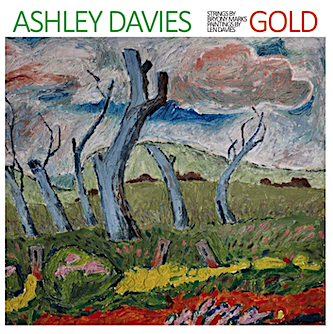 Gold is the most recent album by Australian composer and multi-instrumentalist Ashley Davies. Although the album does pay tribute to the guitar-centric sound of the mid to late 1960s, much of the 10-track, 36-minute album falls into a deeply eclectic genre of orchestrated rock-based instrumentals. To my ears, the lead-off track, “Birth” sounds inspired by the progressive instrumentals of the late, great U.K. band Stackridge with a little Penguin Café Orchestra sonorities mixed in.
Gold is the most recent album by Australian composer and multi-instrumentalist Ashley Davies. Although the album does pay tribute to the guitar-centric sound of the mid to late 1960s, much of the 10-track, 36-minute album falls into a deeply eclectic genre of orchestrated rock-based instrumentals. To my ears, the lead-off track, “Birth” sounds inspired by the progressive instrumentals of the late, great U.K. band Stackridge with a little Penguin Café Orchestra sonorities mixed in.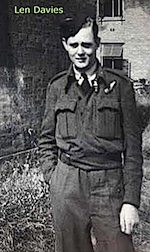 The liner notes of Gold, available so far only on black vinyl LP and digital download, fills the listener in about the significance of the album, which serves as a kind of instrumental tribute to Ashley’s Uncle Len, a World War II hero, and specifically the few hundred paintings Len did, expressly those in “The Lasseter Series”. Gold has a very cinematic sound with Ashley adding, “I turned Len’s paintings and his story into a short film using the music from the album as the soundtrack and have recently won 4 awards from film festivals in New York.”
The liner notes of Gold, available so far only on black vinyl LP and digital download, fills the listener in about the significance of the album, which serves as a kind of instrumental tribute to Ashley’s Uncle Len, a World War II hero, and specifically the few hundred paintings Len did, expressly those in “The Lasseter Series”. Gold has a very cinematic sound with Ashley adding, “I turned Len’s paintings and his story into a short film using the music from the album as the soundtrack and have recently won 4 awards from film festivals in New York.” 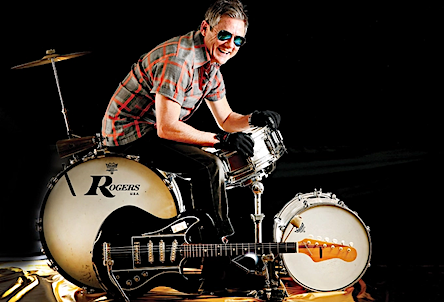 mwe3: Where are you from originally and where do you live now and what is it like? What part of Australia do you like best? The Australian music scene has always intrigued me. Also, tell us about getting into playing, writing and recording music and some of the recordings you’ve made, both as a solo artist and as a session musician, over the decades.
mwe3: Where are you from originally and where do you live now and what is it like? What part of Australia do you like best? The Australian music scene has always intrigued me. Also, tell us about getting into playing, writing and recording music and some of the recordings you’ve made, both as a solo artist and as a session musician, over the decades.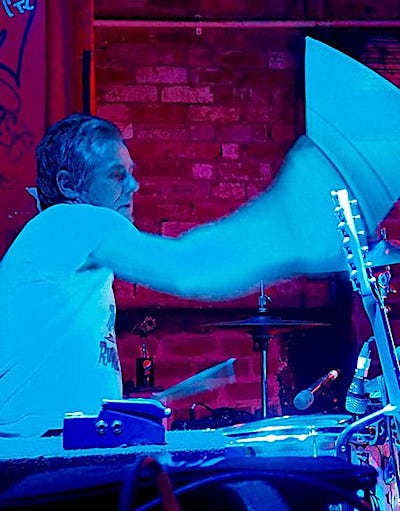 I started drums at school and I had a great teacher. He was a jazz teacher and I had a really good foundation in drum technique and the basic fundamentals of drumming. But when our lessons became a lot of reading, I wasn’t into it so I left drum lessons and just started playing to records all the time and playing with my friends. Soon as I got a car I went out to auditions to get in bands, mainly blues and rock ‘n’ roll in the beginning but then I got into the original alternative scene and pretty much stayed there for a long time because that is where there was no rules that I had to stick to with my playing and how I wanted to play. And at that point in time I just wanted to do what I wanted to do, and original music is the best way to be able to exploit that idea on the kit.
I started drums at school and I had a great teacher. He was a jazz teacher and I had a really good foundation in drum technique and the basic fundamentals of drumming. But when our lessons became a lot of reading, I wasn’t into it so I left drum lessons and just started playing to records all the time and playing with my friends. Soon as I got a car I went out to auditions to get in bands, mainly blues and rock ‘n’ roll in the beginning but then I got into the original alternative scene and pretty much stayed there for a long time because that is where there was no rules that I had to stick to with my playing and how I wanted to play. And at that point in time I just wanted to do what I wanted to do, and original music is the best way to be able to exploit that idea on the kit. 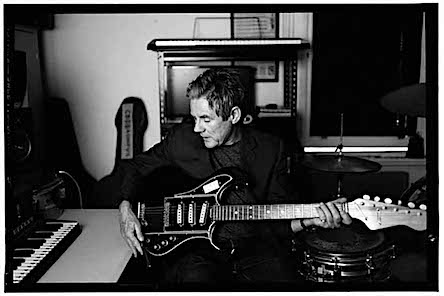 Ashley Davies: I must listen to Stackridge, I haven’t heard of them before. I’m very happy with Gold, that’s for sure. But I’m pretty happy with most of my records, although there is always something that you would’ve done different. With Gold I’m pretty much okay with the whole album though there is still a couple of things I might have changed. What I will say though is that I think Gold is the best of the three concept albums that are based around an historical event in Australian history. I learnt from those first two albums and certainly Gold is tighter musically and thematically.
Ashley Davies: I must listen to Stackridge, I haven’t heard of them before. I’m very happy with Gold, that’s for sure. But I’m pretty happy with most of my records, although there is always something that you would’ve done different. With Gold I’m pretty much okay with the whole album though there is still a couple of things I might have changed. What I will say though is that I think Gold is the best of the three concept albums that are based around an historical event in Australian history. I learnt from those first two albums and certainly Gold is tighter musically and thematically.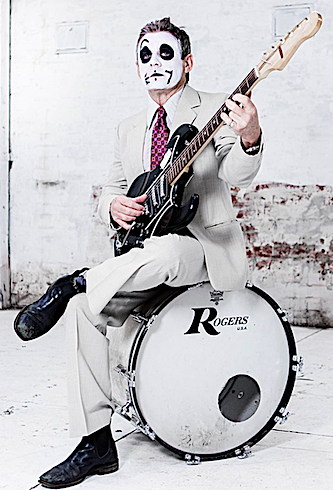 I’m right into Australian history and the story about Lasseter and his gold reef is very interesting… and so is he, as a character. I’m not really too sure about him. There are many gaps in the story of how he came across a map of the gold reef in the middle of Australia. It’s a great tale but it’s a bit hard to get to the truth of it. And he came to a very tragic and sad end. So when I found the series of Lasseter in Uncle Len’s paintings, I was very interested. Firstly because they’re about Lasseter but more so because they were beautiful and inspiring paintings to look at and that is not how the expedition of Lasseter went. I wish Len was around as I would have asked him why he painted Lasseter’s expedition in this way.
I’m right into Australian history and the story about Lasseter and his gold reef is very interesting… and so is he, as a character. I’m not really too sure about him. There are many gaps in the story of how he came across a map of the gold reef in the middle of Australia. It’s a great tale but it’s a bit hard to get to the truth of it. And he came to a very tragic and sad end. So when I found the series of Lasseter in Uncle Len’s paintings, I was very interested. Firstly because they’re about Lasseter but more so because they were beautiful and inspiring paintings to look at and that is not how the expedition of Lasseter went. I wish Len was around as I would have asked him why he painted Lasseter’s expedition in this way.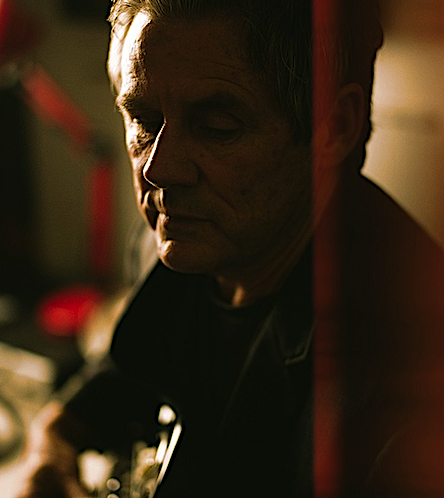 I love recording with other guitarists and on the other two concept albums, I mainly used other guitar players for the guitar parts… I didn’t play much at all. I gave them the lines, parts and arrangements and it went from there. When I’m in the studio I usually get them to play what I have written but then I let them play how they would interpret what I have written to the idea that I wrote that piece of music to. I think it is very important to give musicians freedom to play how they might be feeling the piece as well. Sometimes it works, you get something and sometimes you don’t.
I love recording with other guitarists and on the other two concept albums, I mainly used other guitar players for the guitar parts… I didn’t play much at all. I gave them the lines, parts and arrangements and it went from there. When I’m in the studio I usually get them to play what I have written but then I let them play how they would interpret what I have written to the idea that I wrote that piece of music to. I think it is very important to give musicians freedom to play how they might be feeling the piece as well. Sometimes it works, you get something and sometimes you don’t. 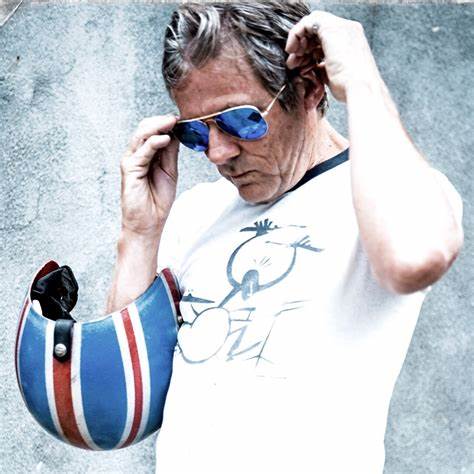 mwe3: Tell us about working with your string arranger during the making of Gold. Who is Bryony Marks, how did you meet her and give us the inside story on how you wrote and recorded with her on the Gold album. Tell us about her music, what she brings to the table and your involvement on her music, what she does, where she comes from, etc.
mwe3: Tell us about working with your string arranger during the making of Gold. Who is Bryony Marks, how did you meet her and give us the inside story on how you wrote and recorded with her on the Gold album. Tell us about her music, what she brings to the table and your involvement on her music, what she does, where she comes from, etc.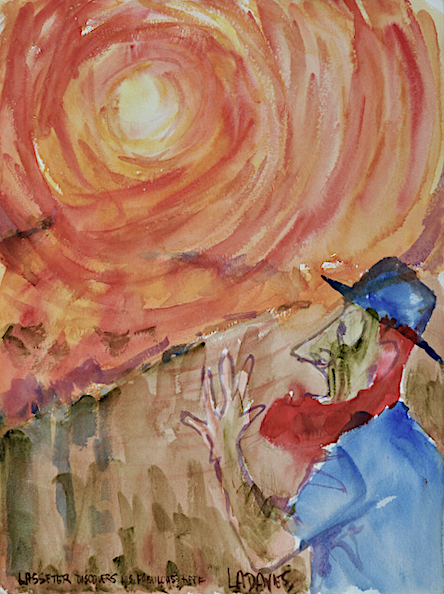
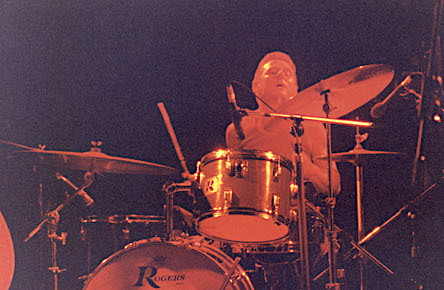 Ashley Davies: That’s another one of those paintings I would love to ask Uncle Len about. It doesn’t look exactly like the desert does it, which is where Lasseter was. It seems very tropical; the vegetation is flourishing… Maybe Uncle Len is using that for some type of symbol, metaphor… But unfortunately I can’t answer that. My feeling was that it was a moment in time in the expedition where everything was going wonderfully well. So that’s how I went about writing the track. it had to be very up and very happy, bouncy, danceable.
Ashley Davies: That’s another one of those paintings I would love to ask Uncle Len about. It doesn’t look exactly like the desert does it, which is where Lasseter was. It seems very tropical; the vegetation is flourishing… Maybe Uncle Len is using that for some type of symbol, metaphor… But unfortunately I can’t answer that. My feeling was that it was a moment in time in the expedition where everything was going wonderfully well. So that’s how I went about writing the track. it had to be very up and very happy, bouncy, danceable. 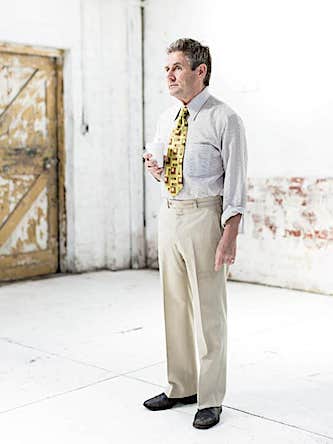 mwe3: Do you think some of the tracks have a Beatles type rhythm. One of the tracks “Meeting” reminded me of a George Harrison influence, especially his soundtrack stuff. Have you heard George’s Wonderwall soundtrack album from 1968? A lot of it is Indian music style but there’s some great stuff on that album. Speaking of that, have you done soundtrack music / recordings in Australia?
mwe3: Do you think some of the tracks have a Beatles type rhythm. One of the tracks “Meeting” reminded me of a George Harrison influence, especially his soundtrack stuff. Have you heard George’s Wonderwall soundtrack album from 1968? A lot of it is Indian music style but there’s some great stuff on that album. Speaking of that, have you done soundtrack music / recordings in Australia? 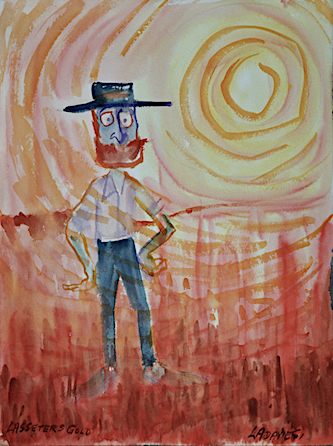
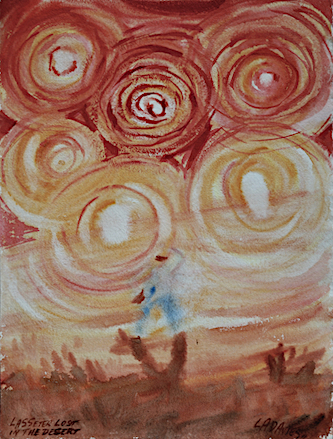
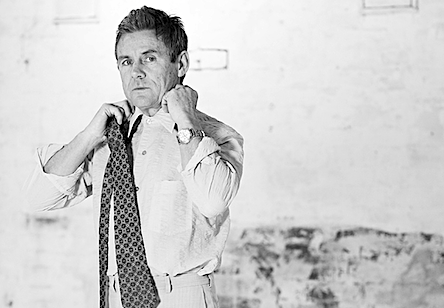 Ashley Davies: Well the first album was with my first band that was called Mighty Servant… That’s a name of a cargo ship that I saw docked at Rotterdam port one day. It’s mainly instrumental and has some songs that I wrote while I lived in Holland. It had a lot of energy that combo and we improvised a lot live and that is captured somewhat on that particular record.
Ashley Davies: Well the first album was with my first band that was called Mighty Servant… That’s a name of a cargo ship that I saw docked at Rotterdam port one day. It’s mainly instrumental and has some songs that I wrote while I lived in Holland. It had a lot of energy that combo and we improvised a lot live and that is captured somewhat on that particular record.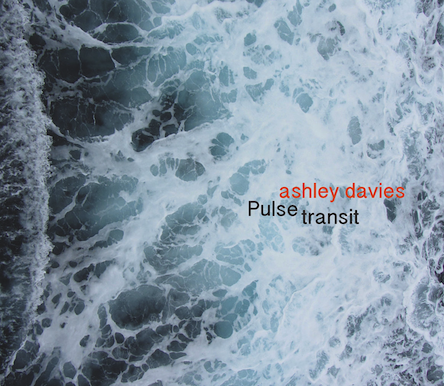 My next album was a concept record about another history subject. It was about an expedition that happened in Australia. Again, I worked with one of Australia’s foremost historians on the subject, I wrote the music and they wrote the narratives. And it must be said one of the reasons that I did both of these albums, the one about Ned Kelly and this one, which is about Burke and Wills is because at school you just weren’t given the whole story.
My next album was a concept record about another history subject. It was about an expedition that happened in Australia. Again, I worked with one of Australia’s foremost historians on the subject, I wrote the music and they wrote the narratives. And it must be said one of the reasons that I did both of these albums, the one about Ned Kelly and this one, which is about Burke and Wills is because at school you just weren’t given the whole story.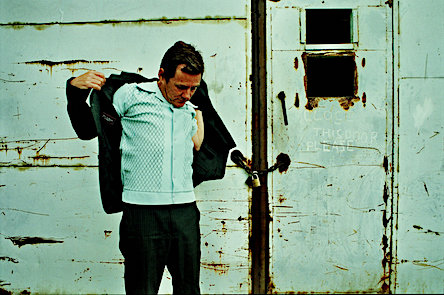 mwe3: What do you think of the current music scene in Australia and globally too? Who are some of your favorite drummers and guitarists and bands, both vocal and instrumental music groups, both in Australia and worldwide?
mwe3: What do you think of the current music scene in Australia and globally too? Who are some of your favorite drummers and guitarists and bands, both vocal and instrumental music groups, both in Australia and worldwide? mwe3: Tell us about the recent film you made and some of the awards you’ve won recently.
mwe3: Tell us about the recent film you made and some of the awards you’ve won recently.